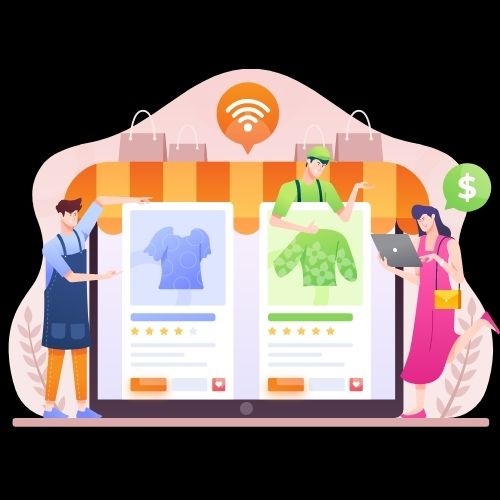What is Programmatic Advertising? What are the Types of Programmatic Media Buying?

Programmatic advertising is the real-time buying and selling of ad inventory through an automatic bidding system. Programmatic advertising allows brands or tools to buy ad impressions on publisher sites or apps via a sophisticated ecosystem. Programmatic advertising contains ad slots for digital out-of-home, online, streaming, TV, video and voice ads.
Types of programmatic media buying –
Contrary to the traditional media buying process, programmatic advertising may not necessarily concern advertisers and publishers working on a one-on-one base to serve ads. The ad delivery relies on the type of programmatic deal preferred.
Different programmatic deals dictate the rules when delivering ads on publishers websites. Let’s look at the critical programmatic deals
- Real-time bidding (RTB) –
Also known as open auction or open marketplace, real-time bidding (RTB) has evolved interchangeable with programmatic media buying mainly because of its widespread usage.
The ad slots are available to everyone in RTB, and they get sold through an open auction type bidding. The most elevated bidder gets the spot. The entire procedure gets done in real-time, and advertisers can select ad slots as they are made public.
Although in RTB, the highest bidder gets the slot, they don’t have to spend their bid amount to reach the space. RTB follows a variety of auctions known as the second-price auction. In second-price auctions, the highest bidder gets assessed only $0.01 more than the second-highest bid for the slot. The second highest bidder is charged negligibly more than the third-highest bidder, and so on.


2. Private marketplace (PMP) –
The private marketplace processes in parallel veins as RTB except for the fact; that it is unrestricted to advertisers on an invitation basis only. In private or secure auctions, publishers usually put aside a premium ad inventory dedicated only to selected advertisers. Many DSPs have their own PMPs that are available exclusively to DSP users/customers. Considering the advantages it proposes to publishers, PMPs gets primarily used by websites and publications with mass reach. Contrary to RTB, the advertisers using a PMP know which websites their ads are being served on, allowing them to measure the accurate ROI of the ads.
3. Preferred deals –
In preferred deals, advertisers get to choose the ad inventory at a fixed price even before it is made public on the private marketplace, followed by open auctions.
Also known as spot buying, the negotiation in selected deals brings a sophisticated approach as both the parties decide on the pricing, targeting, etc., beforehand.
The advertiser is given a sneak peek of the publisher’s ad inventory and is not attached to complete any purchase. Advertisers can use a DSP to comprehend their audience and decide whether to purchase the ad impression.


4. Programmatic guaranteed –
A programmatic guarantee, also known as a programmatic direct or automated guarantee, follows the traditional media buying process. Here, the advertiser and publisher arrange the terms on a one-on-one basis.
Unlike other media buying types we looked at, programmatic direct doesn’t follow a bidding strategy. The inventory is solid directly to the advertiser after the negotiation. Programmatic guaranteed offers advertisers; the capacity to choose when it reaches ad inventories, costs, audience targeting, and frequency capping.
Automated guaranteed gets used by advertisers that know precisely where to place their ads and have hefty advertising budgets.
